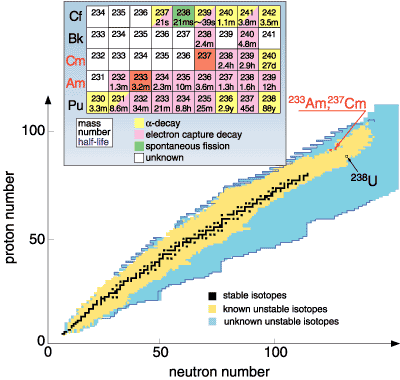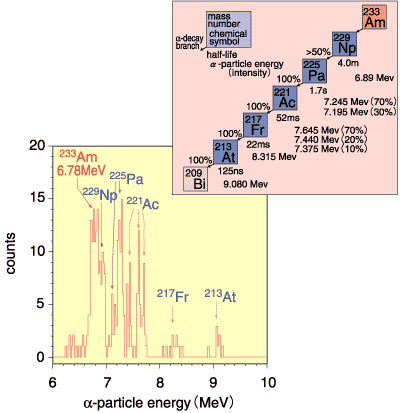| Questions concerning the limits of stability of atomic nuclei are not only of fundamental importance for the physics of nuclear structure (Fig. 1-1). They also have significance for our understanding of the structure of matter in the universe. To answer these question many studies were performed through both experiment and theory. With the aim of obtaining new experimental information, the high performance experimental equipment, the gas-jet coupled isotope separator on-line (JAERI-ISOL), was developed. It recently succeeded in the discovery of the new isotopes of americium (Am) and curium (Cm) identified by their emission of alpha-particles. Am-233 and Cm-237 were synthesized by the nuclear reactions of uranium(U)-233 and neptunium(Np)-237 irradiated with lithium(Li)-6 using the JAERI tandem accelerator. The detection of such new isotopes has been difficult due to their short lifetimes and very small alpha-particle emission probabilities. However, we have made detection possible by carrying the reaction products to the mass separator through a gas jet stream within a few seconds and continuously measuring the alpha-particles emitted by the mass-separated products very efficiently. As a result, it has been determined that the alpha-particle energies of Am-233 and Cm-237 are 6.74 MeV and 6.66 MeV, respectively, and that the half-life of Am-233 is 3.2 minutes (Fig. 1-2). In the future, we plan to continue the research into isotopes of yet heavier elements. |

